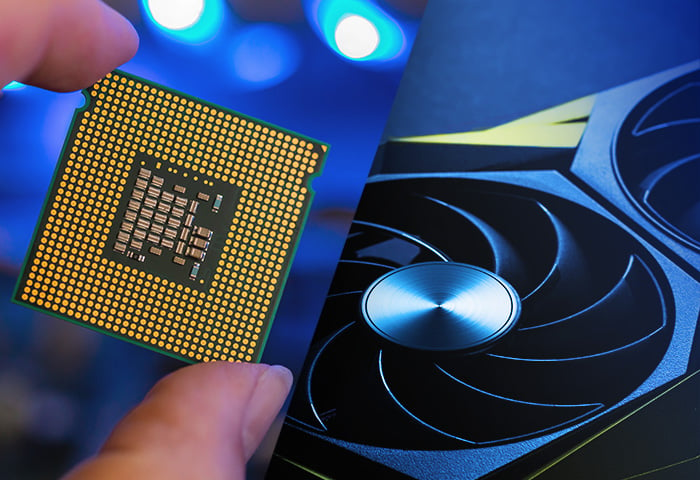What is the Windows registry?
The Windows registry is a database that stores the configuration settings required for your computer to work properly. It covers everything from basic boot-up functions to specific design settings. The Windows registry keeps all system and user settings in one place with a hierarchical, directory structure to help make accessing and editing registry settings more straightforward.
Your Windows registry contains important configuration information for your whole PC. Because the registry underpins critical computer settings, we don’t recommend editing any settings unless you have advanced technical expertise. But if your computer is crashing frequently, or if you’re experiencing other errors, a strong registry cleaning app can help you fix problems with your Windows registry automatically.
How to access the Windows registry
The easiest way to access the Windows registry is by typing regedit into the Windows search bar and then clicking Yes to open the Registry Editor tool. Another way to access the registry is by typing cmd into the Windows search bar to open Command Prompt and then typing regedit and hitting Enter.
Both of those options apply to every Windows version, from Windows 95 on. And because the Windows registry is an essential part of Windows, you don’t need to download or install it.
This is what the Windows registry looks like:

While simply opening and looking at the registry won’t cause any problems, editing the registry should be left strictly to the experts. Don’t change anything in the registry unless you know what you’re doing. If you need help removing malware from your computer, don’t try fiddling with settings in your registry — use a trusted malware and virus removal tool instead.
What is the Windows registry used for?
The Windows registry is used to manage and edit settings related to user preferences and system configuration. The registry might contain leftover files from programs you don’t use anymore. And though these files may take up space unnecessarily, because the registry significantly impacts device performance, you shouldn’t edit settings in your Windows registry unless you know what you’re doing.
While you shouldn’t mess around with the Windows registry on your own, most PC optimization tools are designed to stick to the parts of the registry that can be safely changed. If you find your PC getting slower over time, or if you want to speed up your boot time, using a PC cleaner tool to clean up the registry might do the trick.
Get AVG TuneUp if you think you have problems with your registry, or simply want to speed up and clean up your PC or remove temporary files.
How does the Windows registry work?
The Windows registry is structured exactly like the files and folders system you’re familiar with. The five top-level keys (that’s the name for folders in the registry) are also called hives. Each hive contains a bunch of important keys and values. Values are the items where settings can be changed.
These are the five hives of the Windows registry:
-
HKEY_CLASSES_ROOT
The values in this folder (or hive) tell your computer which program to use to open certain file types. For example, .xls files should be opened with Excel. These are called file associations.
-
HKEY_CURRENT_USER
As the name suggests, this folder (or hive) stores the program settings for your username.
-
HKEY_LOCAL_MACHINE
This is a folder you don’t want to touch. This hive helps your computer boot correctly and keeps track of saved passwords and security settings.
-
HKEY_USERS
If more than one Windows user is logged into the computer, the settings for the other, inactive users are kept here.
-
HKEY_CURRENT_CONFIG
This folder (or hive) keeps track of system vitals, like CPU usage, temperature, and memory.
Inside each hive are a bunch of keys (other folders) containing all sorts of values (settings). Your computer needs this information to perform important tasks, like booting up, but small and seemingly inconsequential settings are also stored there, like font size, right-click menus, mouse speed, etc.
While the registry doesn’t take up much space on your hard drive, it’s good to be thorough and use a registry cleaner tool to keep it performing optimally. If you’ve got a problem like a blank screen on bootup, there’s a chance the problem is in the registry.
Don’t bother with checking the registry, though — computer problems usually stem from other areas. Since the registry is one of the most important parts of your computer, be extremely careful when poking around in it. You should only let a trusted app make changes to it.
AVG TuneUp was designed by performance-optimization experts, and it knows its way around your computer. It will tweak and declutter where it matters, not just in the registry, and leave alone that which doesn’t need to be fiddled with.

AVG TuneUp will remove bloatware and other programs that bog down your computer, update programs automatically, and get rid of temporary files that are slowing you down.
AVG TuneUp is a multifunctional, comprehensive optimization tool that will keep your computer running as smoothly as the day you got it.
Which platforms have Windows registry?
Every version of Windows since Windows 95 has the Windows registry — your computer can’t function without it. All of the following Windows versions have used the same standardized, hierarchical directory structure for essential Windows settings:
-
Windows 11
-
Windows 10
-
Windows 8
-
Windows 7
-
Windows Vista
-
Windows XP
-
Windows 2000
-
Windows NT
-
Windows 98
-
Windows 95
Earlier operating systems, like MS-DOS and Windows 3.1, used autoexec.bat, config.sys, and INI files. But because these systems were spread out across different folders connected to the different programs, they were very difficult to work with.
The Windows registry created a more formal, centralized structure to act as a hub for all the things your computer needs to know to run properly.
How to back up the Windows registry
Backing up the Windows registry is essential if you decide to make changes to it. Since the registry takes up very little space, creating a backup can only help you. It may save your system from breaking, too, in case you or a piece of malware changes something it shouldn’t have.
If things go awry, just restore the backup and everything should return to working order.
Here’s how to back up your Windows registry:
-
Type regedit into the Windows search bar and click Yes to open the Registry Editor.
-
In the Registry Editor tool, click File at the top and select Export.

-
Create a filename and select where you want your Windows registry file to be saved. Then click Save.

Your Windows registry file is a snapshot of all your computer’s most important settings. The registry can be restored from this document, and your computer will return to a previous state (presumably one where everything was in working order). All you’ll have to do is click File in the Registry Editor tool again, choose Import, and then select the file you just saved.

Optimize your device’s performance with AVG TuneUp
If you’re looking for an all-in-one app to maintain all the parts of your PC that impact performance, get AVG TuneUp. AVG TuneUp updates programs regularly, minimizing the risk of hacker exploits and keeping your computer running smoothly. Rather than hunting through the Windows registry to try to fix something broken, get the performance-optimization tool designed and trusted by experts.




















